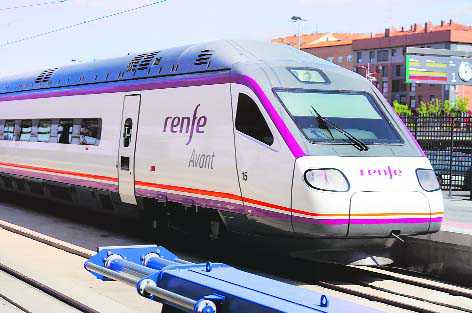Whistle-stop tour with train in Spain
Trains and buses made news this week as they zoomed through at break-neck speeds with technological breakthroughs. Switzerland got With the Spanish company Talgo making trial runs of fast trains in India, my train of thought took me on the track of the Spain trip I undertook a couple of years back. Our mode of travel within Spain was the train. Let me give you a whistle-stop tour of the journeys from Madrid to Barcelona in the north and then southwards to Seville, Cordoba and Granada and back to Madrid.
A whistle-stop tour is a travel done very quickly and with brief pauses. Initially, the term was used only in the political context: during a whistle-stop tour, the politician campaigns by making a series of brief appearances or speeches at a number of small towns over a short period of time. In the 19th century, when railroad was the common means of travel over the vast expanses of land, as in the USA, politicians would charter tour trains and go from town to town. At each stop, the candidate would make a whistle-stop campaign speech from the rear platform of a train. He would rarely set foot on the ground. This derives from the earlier practice of trains stopping at small railway stations only on signal by the ‘steam’ whistle that indicated to the driver that there was a passenger to pick up.
Well, that time seems so long ago! We have covered a quite a distance from the times of steam locomotives. And, nothing exemplifies it more than the sleek Renfe, the Spanish national railways, with AVE (Alta Velocidad Española, Spanish high speed) service. As it smoothly gathers momentum and touches a speed of up to 300 km/hour, the Barcelona-Cordoba distance of around 950 km is covered in about four and a half hours! The added advantage? It’s a comfortable, hassle-free commute, minus the tedious check-ins and waiting periods of flights. And, it provides some stunning views. As you zoom along, you are treated to a vista of the changing landscape, of olive groves, of some industrial terrain, the windmill-dotted vineyards and, mostly, Spain's central dry plains, the countryside is filled with rolling hills and a little afar, you can spot a couple of castles and forts along the way.
You may even shift track from sightseeing to entertaining yourself by plugging into a movie or a song. Or if you prefer, put your feet firmly on the footrest, switch on the reading light and pour into that book booked for travel time. Or, indulge in that favourite pastime of most passengers: pull the table and open your bag of goodies and munch on happily.
Incidentally, the trains geared to top speeds of 430 km/ hour are not the conventional railway. They are the maglev (magnetic levitation) trains. China is home to it: the Shanghai Maglev train operates from the Shanghai airport. South Korea, too, boasts of a maglev train that runs from the Incheon airport. Maglev is a transport method that uses magnetic levitation to move vehicles without touching the ground. Interestingly, when that first passenger steam locomotive by the Stockton & Darlington Railway thundered out in Darlington, UK, on Sept 27, 1825, a crowd watched in awe and fear (of the unkown) as the train hit the then unimaginable speed of 15miles per hour, outpacing the horses.
At this point, I am tending to sidetrack a bit since I recall this train ride of another kind. About half-an-hour’s drive from Barcelona is the Codorniu vinery. It’s a picturesque voyage along the Llobregat river overlooking the spectacular Montserrat mountain. Founded in 1551, Codorniu is the world's oldest and second-largest producer of bottle-fermented sparkling wine, called cava, made by the traditional champagne method. The wine-tasting session was preceded by a peak into the vineyards and an exploratory trip into the underground dark and cold wine cellar.
Well, after this heady sidetrack, let’s get back on track: we are not on board a gravy train, after all. A gravy train refers to a situation in which someone can make a lot of money for very little effort. This week, the rail journey touched another milestone: the world's longest train tunnel —the 57-km long Gotthard Base Tunnel — under the Alps was opened. Conceived in 1947, it took 17 years to complete and cost 11 billion euros. It will cut the train journey from Zurich to Milan by almost an hour.
But, it not the end of the trip. A more exciting voyage is always round the corner, breaking previous records, much like:
Q. “What’s the use of having a timetable if the trains are always late?”
A: “How would we know they were late, if we didn’t have a schedule?”
hkhetal@gmail.com









